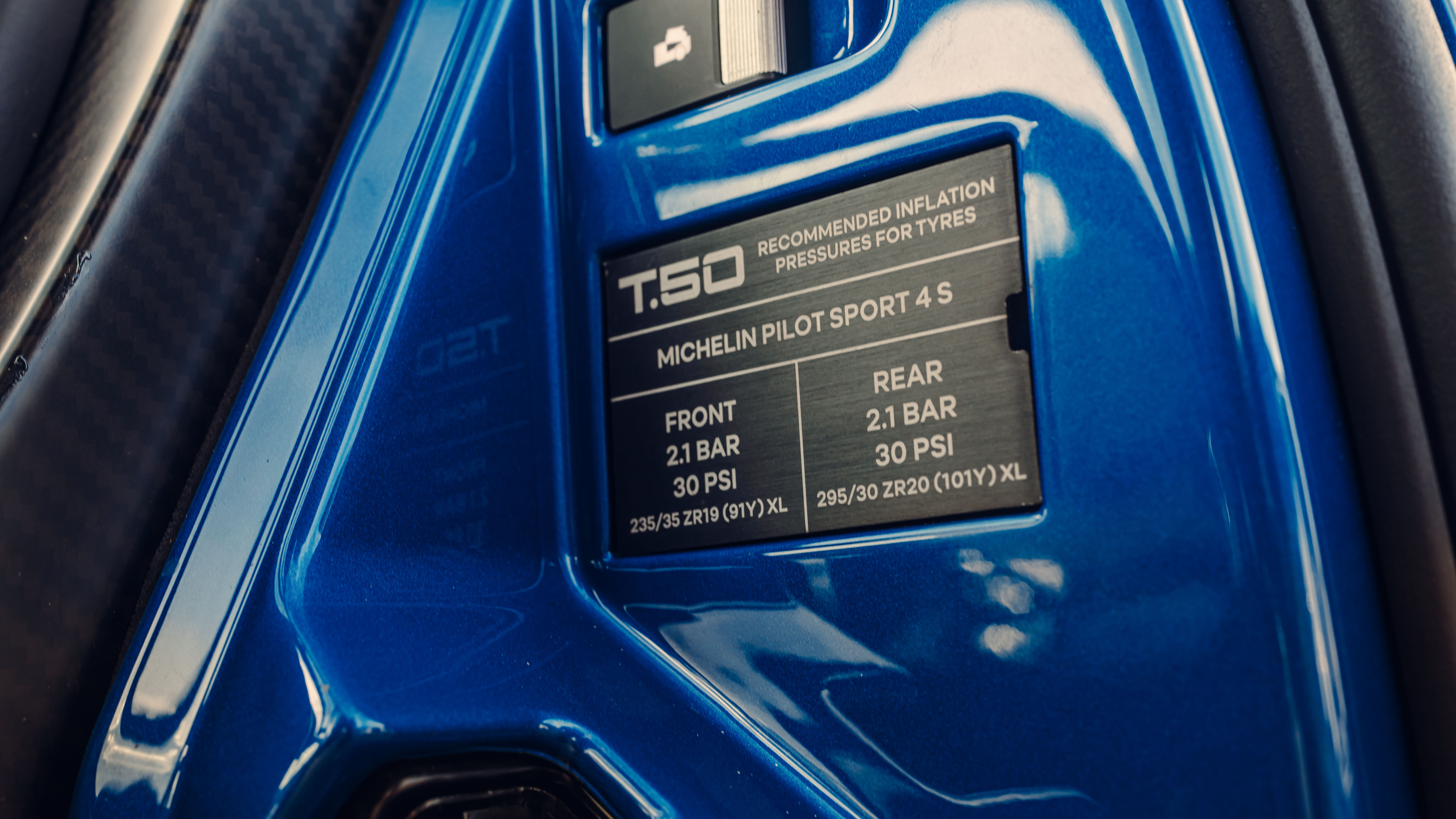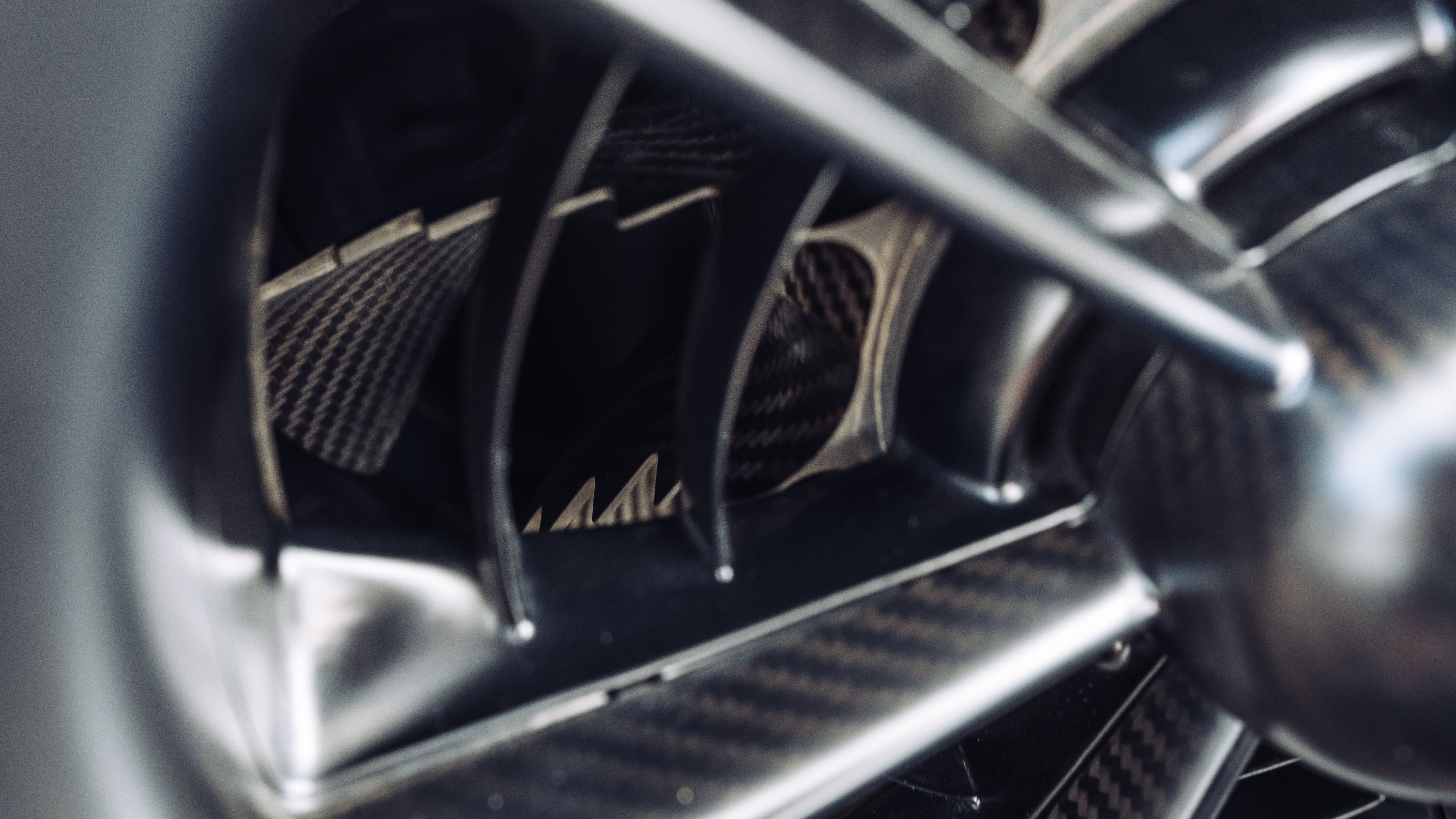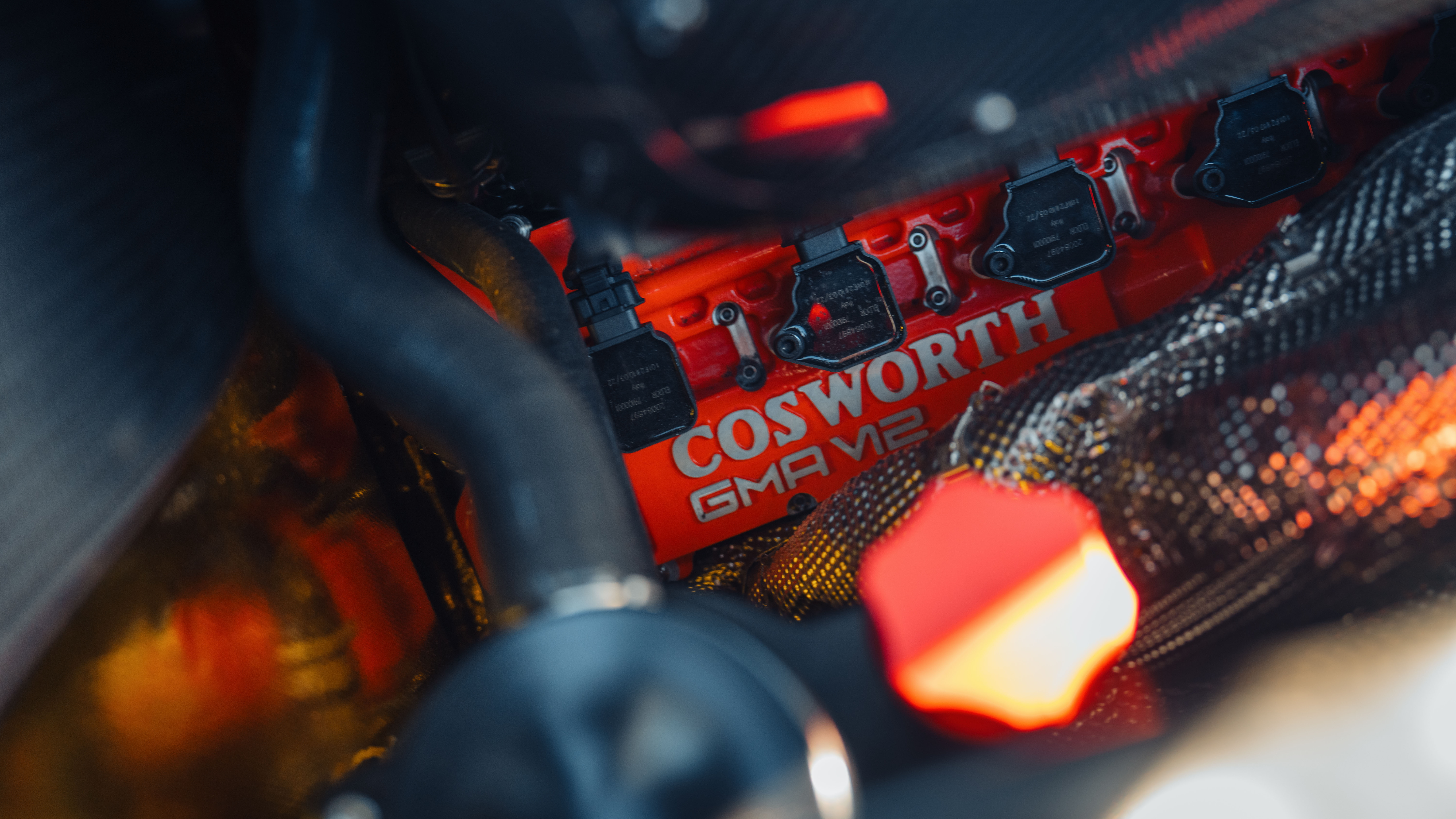
Let there be light: an 883-mile exclusive roadtrip in the sensational GMA T.50
And Gord saw that the light was good. So he decided to build a car that bettered his McLaren F1 in every way. We’re first to drive it
Ever since we started driving, we’ve been looking. You may not realise you’ve been looking, but you have. The trouble is we never find it. Well, I’ve found it. The NA-137. The GMA T.50. The road. And the car. And that’s it. That’s what I’d do with my final tank of fuel.
And while we’re at it, powers that be, could I also request the exact same weather and traffic as 7am–11am on 6 October 2023? It’s a week later now, and every night I’ve dreamed about the T.50 on that road. I’ve never had that before. Reliving memories is one thing, but to have your off-duty brain replay scenes with such vivid clarity you remember them the next morning is quite another. My subconscious clearly doesn’t want to let those moments go either.
I don’t know whether to feel relief or profound excitement that Gordon Murray and his team have created arguably the finest driving device that’s ever been conceived. No less was expected after all. And yet, despite everything I’d already learned about it, this wasn’t the car I expected it to be. It wasn’t better or worse, it was just different.
Photography: Mark Riccioni
This wasn’t a ‘one road’ thing, by the way. The T.50 was mine for four whole days and close to 900 miles. The length of the Pyrenees, from Barcelona to Bilbao. I knew it had potential, but hadn’t expected it to throw up the Driving Nirvana Combo. My original plan had been a lightweight roadtrip, until I realised two things: that an all areas reduction would see me ending up like James May in that racing Aston; and that if Gordon had been utterly ruthless about mass, we wouldn’t have a pair of lovely leather cases for each luggage locker, but a bin bag.
Just a roadtrip then. But what a road trip, taking in about 25 cols and passes, investigating the length and breadth of this secluded mountain range, ricocheting between Spain, France and Andorra. The stuff that lights our fires. The stuff the GMA T.50 was designed for.
A point on that: this is not your common or garden hypercar, is it? In fact I’m not sure it’s a hypercar at all considering it’s got less power than an entry level McLaren Artura. Gordon says “it’s all about honouring and improving the F1” and there’s a lot to unpick there.
It’s a breath of much needed fresh air. A few weeks previously I’d been with the Supercar Owners Circle in Spain, watching Bugattis, Ferraris, Koenigseggs and Paganis struggle to find a role besides ‘show-off’. They are rolling artworks, glorious self-promoters and vanity display cases all rolled into one. Many are mesmeric to drive, but that’s not the focus. In fact driving feels like a job they’ve outgrown in their quest for impact. I suppose that gives them a broader range of talents than the T.50, about which the most accurate sobriquet is probably ‘the driver’s hypercar’. Because that’s all you want to do with it. The rest is a byproduct. It takes a cleaver to anything that interferes with its core task.
The cleaver came down again and again. No power steering. No twin clutch gearbox. No touchscreens. No adaptive dampers. A Sport mode that adjusts nothing but the throttle. No turbos. No wings. No fuss and no bother. What you’re left with is a three-seat cockpit in a rear-drive carbon tub, powered by a naturally aspirated V12 engine, the whole thing weighing less than a tonne: 997kg as it sits here. Most rivals are at least 50 per cent heavier. What are they doing with all that weight saving carbon? What’s exotic about the T.50 isn’t the artistry, but the engineering itself.
I meet it parked up at GMA’s service centre in Barcelona. Its compact neatness is disarming – it’s no more intimidating than a Porsche Cayman – but it has a few tricks. Press and hold the unlock button on the overly chunky key and all doors and engine covers rise together, an enticing piece of choreographed drama. I load it with stuff I need for the next few days, finding places for wallet, cap, suncream, phone and water bottle, plugging in USB leads, fitting bags into bays. It’s no effort at all. Bigger stuff goes in cubbies under the passenger seats, smaller stuff magnetically lidded ones either side of the dash. Everything is within easy reach of the driver. There are no cupholders, because as chief engineer Nik Hoyle tells me, “there are two things Gordon loathes above all: rear anti-roll bars and cupholders".
I install myself. I imagine it’s a bit like being a gymnast on a pommel horse – your hands have to support your weight and move you across the cabin, while your feet merely scurry across the flat floor. The pedals and steering wheel can be adjusted with spanners, the carbon seat slides and has interchangeable foam panels that adjust the shape and firmness. I make an audible ‘ahh’ when I drop in for the first time. It’s the perfection of the position, the slender rightness of the circular steering wheel, the latticework pedals, the gearlever’s stark simplicity, the clarity of the instruments and layout. There’s no fanfare, just an anticipation of operation. And for me, an anticipation of what lies ahead. I can’t believe the position I find myself in. Later, my dreams will remind me. Now, I have to remind myself that I’m not dreaming. As I’m sure it is for a lot of you, the McLaren F1 is my automotive North Star, the car more responsible than any other for making me pursue my dream job. The one I’m doing right now, in case there was any doubt. This, I barely need to remind you, is Gordon’s idea of updating and improving the F1. I feel trepidation.
Barcelona beckons. I slide my index finger under the light, almost fragile starter button cover. Short presses start things, longer ones stop them. A short press and the V12 bursts into life. Only that’s not the engine, it’s the integrated starter generator, a 48V system that does the heavy lifting of spinning the crank before it fires so it needs less fuel, starts more cleanly. After a few seconds of ISG action a bam-uhhh that makes everyone jump announces the engine has not only fired, but instantly settled into its idle. It does everything fast, this motor.
To get rolling smoothly don’t touch the throttle – the revs will only zing and fizz. Instead just lift the clutch, let it start engaging and only then use the right hand pedal. Feel its weight and precision beneath your foot. Realise, as you go for the shift back into second, that it’s all going to take a bit of learning when the movements are this crisp, short and mechanical. But God, the instant sense of connection.
Top Gear
Newsletter
Thank you for subscribing to our newsletter. Look out for your regular round-up of news, reviews and offers in your inbox.
Get all the latest news, reviews and exclusives, direct to your inbox.
A bit of power steering is clutched in at low speed, but above 10mph you’re on your own so there’s weight to deal with there as well. But really the first thing that strikes you is how manageable and usable it all feels. Again, no sense of intimidation when you’re surrounded by so much glass and have such intuitive switchgear. Montjuïc is swarming with other learner drivers but I soon feel comfortable progressing, so head north on smooth, quiet motorways.
Not sure I’d describe the T.50 as smooth and quiet. I had half expected this to have a semi-GT vibe based on its lightness. I presumed daintiness, that it would scamper along like an Alpine A110. Not so. It’s more stiffly sprung than I expected, taut in its movements, there’s constant road hum. Knocking along at 2,000–3000rpm is where you detect similarities with the larger Cosworth V12 in the Valkyrie – both share a plain mechanical thrash of pure engine noise. So excessive in the Valk that you need ear defenders, here it’s way, way calmer. Easily overcome by the 700W Arcam stereo, doesn’t dominate a cabin chat or a phone call either. There’s nothing here to prevent long distance use, I’m thinking, as I approach a tollbooth.
It’s the first time I realise I’m sitting in the centre. It comes so naturally, the symmetry soothes the brain. The toll tag soothes my path through. No need to wiggle a hand out the window slot. Borders are crossed, into France then Andorra, with equal ease. The cadence of driving has picked up with the elevation, hints of savagery lurking as the needle ventures further around the central dial. So much more to go though. But this is a car you build up to, that doesn’t reveal its secrets all at once – there are so many facets to indulge and appreciate it comes across as sensory bombardment.
Everything, if it’s not chattering away, is providing tangible satisfaction. I’ll give you an example. You approach a roundabout, trying not to fluff the downshifts because the car deserves better, you check directions on CarPlay and marvel once again at how well that integration is done, you check the mirrors and note the camera screens are exactly where they need to be, you indicate and appreciate how simple the process is when the steering wheel is shorn of all frivolity, you note how glorious it is to position the car when you’re sat centrally, the steering loads up and you delight in that even at modest speeds, and as you twist the lock off you remember why you wore race boots to drive it. Because the throttle pedal looks so good, has clearly been designed to perform to its best, that it deserves the best of you too.
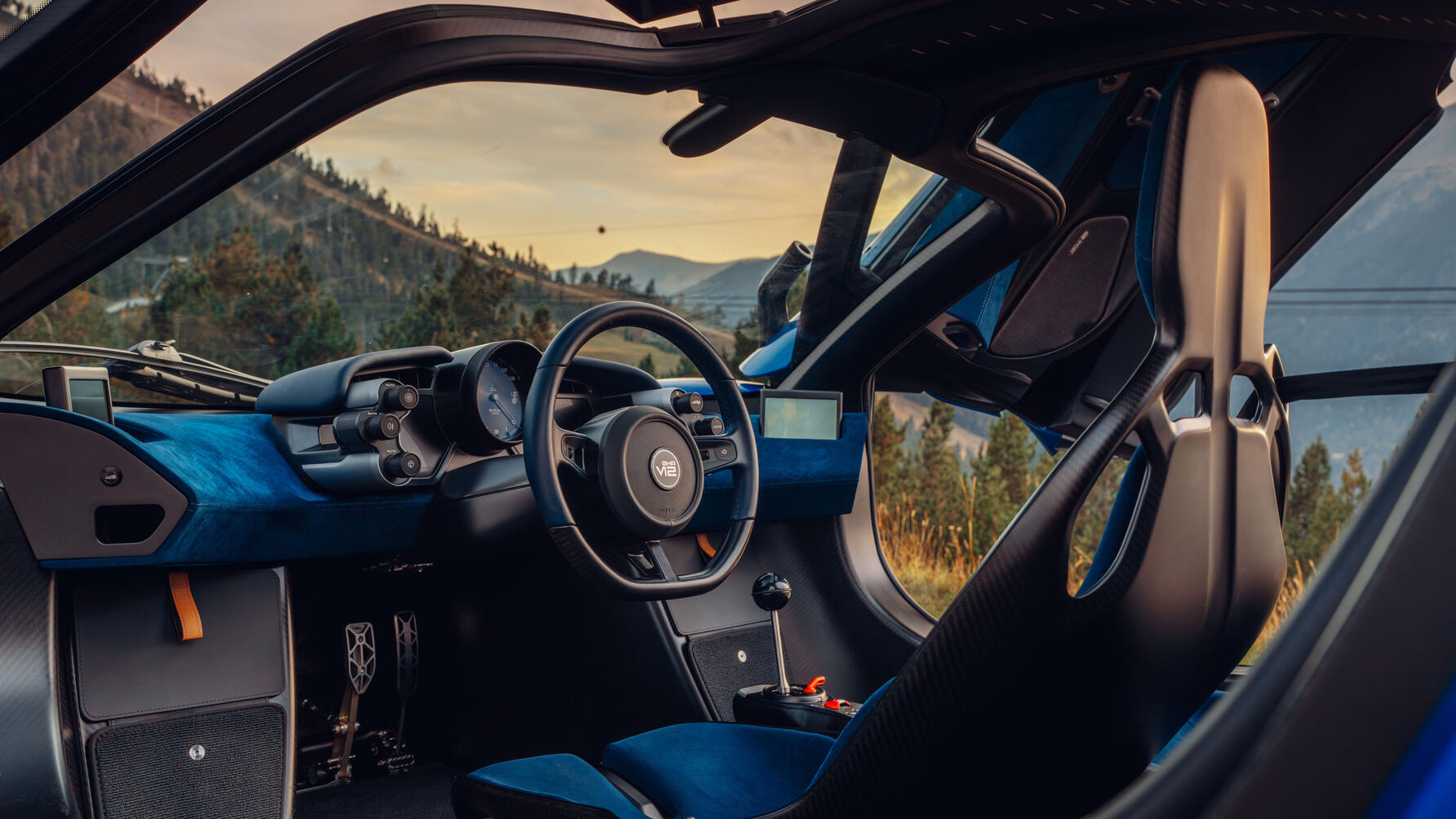
What I’m saying with all of this is that it’s not just the tangible driving stuff we normally talk about that stands out here. Other cars celebrate the engine or the chassis. The T.50 celebrates everything. And because it gives you so much satisfaction you respond to it not as a machine, but something more human. You want to do your best for it, rather than trying to get the best out of it. A process in which you both grow.
Up and over we go at El Pas de la Casa for a day and a half of playtime across the Coll de Cabús and Port d’Envalira – at 2,408 metres, the highest pass in the Pyrenees. A little factoid for you here. Thanks to gravity, stuff weighs less at altitude – up here the T.50 is just 996.966kg. That’s right, I’ve saved 34 grams. You’re welcome, Gordon.
The engine doesn’t notice any oxygen deficiency. It’s an absolute wonder, this Cosworth V12, the best road car engine I’ve ever used. Not for what it does at 12,000rpm – that’s just the headline everyone focuses on – but for what it does everywhere else. I burble through villages in fifth (“the speed bump to 180mph gear”, Nik informs me) because of how tractable and smooth it is at 1,500rpm. I surge the throttle between 4,000– 5,000rpm because of the intake pulse and gargle. But I use 6,000–9,000rpm, because that’s where the containable magic happens: response, torque, energy, crescendo, leaping charisma and this compelling, addictive, lips peeled back snarl.
I say containable for a reason. Beyond 10k the propulsion is so vivid, so wild, so nerve jangling, it’s all you can do to keep your foot down. The noise now is pure Nineties F1 scream. So much information is coming at you that you struggle with the processing. Everything – road, traffic, visibility, surface – needs to be aligned when you pin it at the top end. I only find those opportunities a couple of times each day. Good. It makes them more special when the stars do align.
Gordon says “it’s all about honouring and improving the F1” and there’s a lot to unpick there
The noise, apparently, reverberates so accurately off distant mountains that on a couple of occasions the video team is convinced that there’s more than one T.50 operating in the vicinity. I worry that villagers will be out with pitchforks when we crawl through, but because the T.50 is small, because it isn’t a bewinged, beslatted aggressor, we’re forgiven.
We head south and west from Andorra, chasing sunset along the N-260. Look it up. Many bikers proclaim it the world’s greatest road. It dances through Pyrenean foothills, into gorges, over cols, on tarmac laid with love and absent of traffic. It’s often narrow, the sort of place supercars fear to tread. Not when they’re only 1,850mm wide. Again and again this is what strikes me about the T.50: how easy it is to use, how rewarding it is in everything it does.
It has a sweet spot through. Third and fourth gear corners. The steering weights up a lot through hairpins, making it physical to drive. My shoulders and triceps feel it after a day, and I get backache from the seat. The vertical headrest is a strong signature when you look through the car, but it’s too upright for me. But I forget all that through sweepers, using the mighty Brembo stoppers, building up speed and confidence. The harder you go, the better it gets. It wants to be driven with proper inputs, heel and toeing is best when you’ve got some actual travel into the brake pedal, the gearchange – so tight, so precise, so controlled – wants to go through fast or the revs drop almost to nothing. That third/fourth plane is a delight, the shift itself not the slick flick of a Civic Type R, but something heavier, more connected and mechanical. Something you’ll enjoy attempting to perfect. A lifetime’s work.
Everything starts to come to you. Up until now it’s been occasionally frustrating because it doesn’t suffer foolish inputs, it doesn’t fluff your ego. It demands accuracy. But now the magic of the suspension is revealed. You feel everything, all loads, all surface grumble, yet nothing throws the T.50 off balance. Composure is complete. I don’t want it softer now, this is the Goldilocks set-up, compliant enough for motorways, sharp enough for track use. Who needs adaptive dampers?
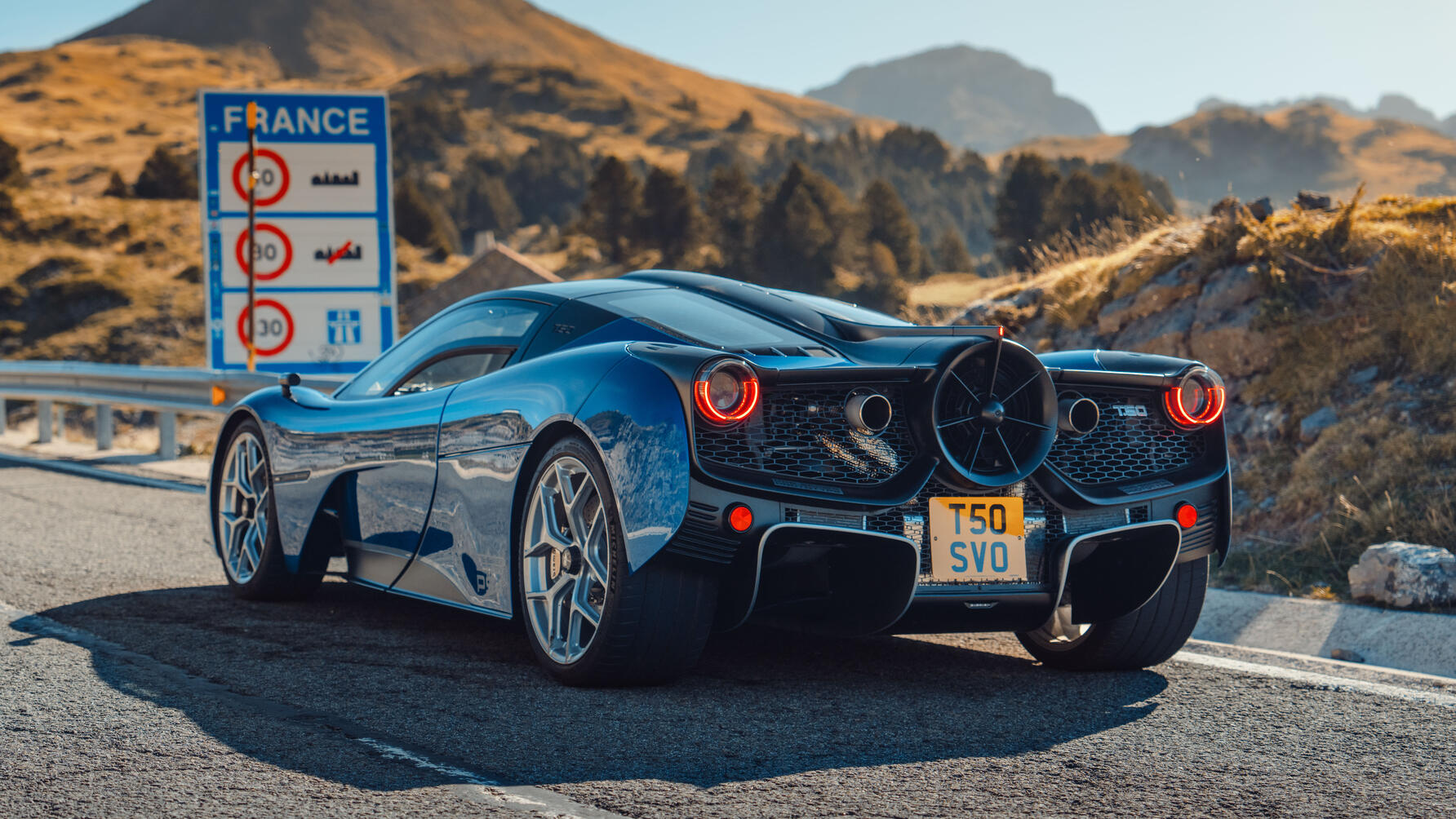
It’s nighttime when we get to Pamplona. The headlights have proven to be yet another boon – no matrix LED trickery, just a precisely edged block of potent main beam, activated by the left paddle. Photographer Mark Riccioni and I trickle it into the pedestrianised centre at midnight. Width restrictors? No issue. Big speed bumps? Likewise. Gordon would never condone a noselift, just do the ground clearance and overhangs right in the first place. And fit a couple of surreptitious nylon scuff pads just in case. The T.50 doesn’t make too much impact among the arm in arm strollers until the doors flare open. Everyone is intrigued, few know what it is, but those that do almost fall over themselves.
Dawn. La Piedra de San Martín is deserted. It’s also utterly fabulous. Earthier, more remote and tucked away than a Disneyland pass such as the Grossglockner, it was clearly constructed by artists, artisan road builders who appreciated the need for an unnecessary tunnel, a climbing loop, a journey through the rocks and trees, a tease and crescendo of scenery. Nik Hoyle joins me in the passenger seat here and we giggle and gasp at the perfection of it. That will be a lifetime memory for me – both waking and sleeping, I hope.
To be fair the journey here is spectacular from 50 miles out, and by this stage I’m fully in tune with the T.50. It’s not for everyone. It’s more demanding to drive than I expected it would be because it’s raw, pure and unfiltered. That last is the word I kept coming back to. Because that’s what sets the T.50 apart from every other hypercar. They all filter the experience, send signals through electric processors, reducing your connection, while increasing their capability. It’s clever stuff, allows them to travel faster, but airbrushes the experience.
I kept looking down at the speedo and being shocked that I wasn’t going faster. The T.50 is the slowest fast car I’ve ever driven – and simultaneously the fastest feeling. This is reductive engineering at its finest. It’s not just the weight loss, it’s the removal of everything that interferes with driving. The result taps more deeply, intuitively and rewardingly into your driving centres than any road car I’ve ever driven, as if your hands reach down past the physical controls. Total immersion. And yet I know that I didn’t learn everything. And that’s the reason I’d have it for my last ever drive – to know there’s more to discover.







